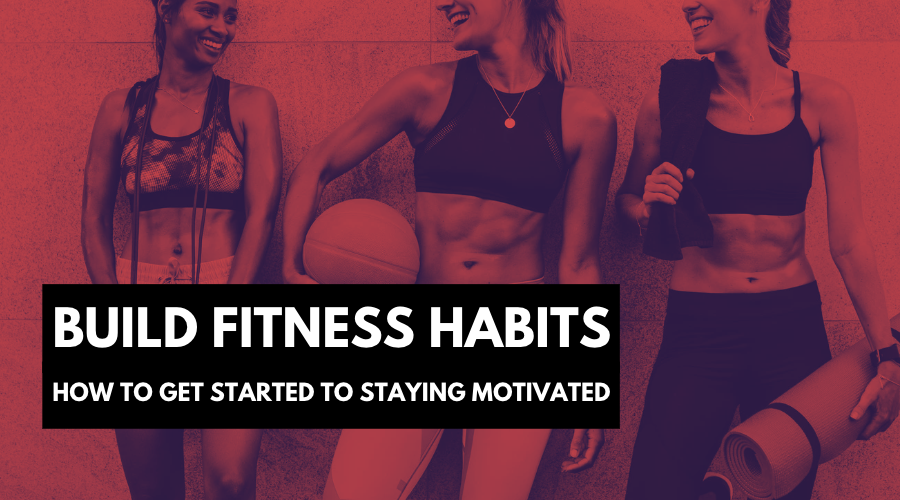
by wf_admin | Sep 22, 2023 | News
Maintaining a healthy and fit lifestyle has become increasingly important. Building fitness habits can have a profound impact on our overall well-being, both physically and mentally. However, embarking on a fitness journey can often be overwhelming, especially for beginners. This article aims to provide valuable tips and guidance on how to start building fitness habits by taking small, actionable steps. Whether you’re a novice or someone looking to reestablish healthy routines, this comprehensive guide will help you kickstart your fitness journey and stay motivated along the way.
Why Building Fitness Habits Matters
Before delving into the specifics of building fitness habits, it’s essential to understand why they are crucial. Regular exercise and physical activity offer numerous benefits, including improved cardiovascular health, increased strength and endurance, enhanced mood, stress reduction, weight management, and better sleep patterns. By establishing consistent fitness habits, you lay the foundation for a healthier lifestyle and pave the way for long-term success in achieving your fitness goals.
Getting Started: Start Small, Aim Big
When it comes to building fitness habits, starting small is key. Many people make the mistake of diving into intense workout routines or extreme diets right from the beginning, which can often lead to burnout or injury. Instead, focus on making gradual changes that you can sustain over time. Here are some practical tips to help you get started:
1. Set Clear and Realistic Goals
Begin by setting clear and achievable fitness goals. Whether it’s losing weight, building muscle, improving flexibility, or increasing overall fitness levels, having a specific target in mind will provide you with direction and motivation. Remember to set realistic goals that are tailored to your individual circumstances and current fitness level.
2. Prioritize Consistency
Consistency is the key to success when it comes to building fitness habits. Aim to incorporate physical activity into your daily routine, even if it’s for a short duration initially. Consistency builds momentum and helps create a habit loop that makes it easier to stay on track in the long run.
3. Start with Activities You Enjoy
Engaging in activities that you genuinely enjoy will make your fitness journey more enjoyable and sustainable. Whether it’s going for a walk, dancing, cycling, swimming, or joining a group fitness class, find activities that excite you and make you look forward to exercising.
4. Break it Down into Manageable Chunks
If the idea of an hour-long workout seems daunting, break it down into smaller, more manageable chunks. You can start with as little as 10 minutes of exercise per day and gradually increase the duration as your fitness level improves. Remember, every bit counts, and consistency is key.
5. Incorporate Physical Activity into Daily Life
Fitness doesn’t have to be limited to the gym. Look for opportunities to incorporate physical activity into your daily life. Take the stairs instead of the elevator, walk or bike to nearby destinations, or schedule active breaks during your workday. These small changes can add up and contribute to your overall fitness goals.
6. Find an Accountability Partner
Having an accountability partner can significantly increase your chances of success. Find a friend, family member, or workout buddy who shares similar goals and can provide support and motivation along the way. Together, you can keep each other accountable and celebrate your achievements.
7. Track Your Progress
Tracking your progress is crucial for staying motivated and identifying areas of improvement. Keep a record of your workouts, measurements, or any other relevant metrics. This way, you can visually see your progress and make adjustments as needed.
Staying Motivated
Maintaining motivation is often the biggest challenge when it comes to building fitness habits. Here are some strategies to help you stay motivated throughout your fitness journey:
1. Find Your Why
Identify your personal reasons for wanting to build fitness habits. Whether it’s improving your health, increasing your energy levels, boosting your self-confidence, or setting a positive example for your loved ones, understanding your underlying motivations will help you stay committed and focused.
2. Celebrate Milestones
Celebrate your achievements along the way, no matter how small they may seem. Recognize and reward yourself for reaching milestones and accomplishing your fitness goals. Treat yourself to a massage, buy new workout gear, or indulge in a healthy and delicious meal. Celebrating your progress will reinforce positive behaviors and keep you motivated to continue.
3. Mix Up Your Routine
Avoid falling into a fitness rut by incorporating variety into your routine. Trying new activities, exploring different workout styles, or joining fitness classes can keep your workouts exciting and prevent boredom. Variety not only challenges your body in new ways but also keeps your mind engaged and motivated.
4. Seek Support and Accountability
Surround yourself with a supportive network of friends, family, or like-minded individuals who share similar fitness goals. Engage in fitness communities, join online forums, or participate in group challenges. Having a support system and being accountable to others can provide encouragement, advice, and motivation when you need it most.
5. Visualize Your Success
Create a vivid mental image of your desired outcome and visualize yourself achieving your fitness goals. Use visualization techniques to imagine yourself feeling strong, healthy, and confident. Visualization can help reinforce positive beliefs and motivate you to take the necessary actions to turn your vision into reality.
6. Adapt and Overcome Challenges
Expect setbacks and obstacles along your fitness journey. Life can throw curveballs, such as busy schedules, injuries, or lack of motivation. The key is to view these challenges as opportunities to learn and grow. Adapt your routine as needed, seek alternatives when facing obstacles, and never lose sight of your long-term goals.
7. Practice Self-Care
Remember that building fitness habits is not just about physical exertion. Take care of your overall well-being by prioritizing rest, recovery, and self-care. Get enough sleep, nourish your body with nutritious foods, and listen to your body’s signals. Taking care of yourself holistically will enhance your motivation and make your fitness journey more sustainable.
Building fitness habits is a transformative journey that requires commitment, patience, and perseverance. By starting small, setting realistic goals, and staying motivated, you can lay the foundation for a healthier and more active lifestyle. Remember that building fitness habits is a personal process, and what works for one person may not work for another. Listen to your body, be kind to yourself, and embrace the joy of the journey. With dedication and consistency, you can achieve your fitness goals and enjoy the numerous benefits that come with a fit and active lifestyle.
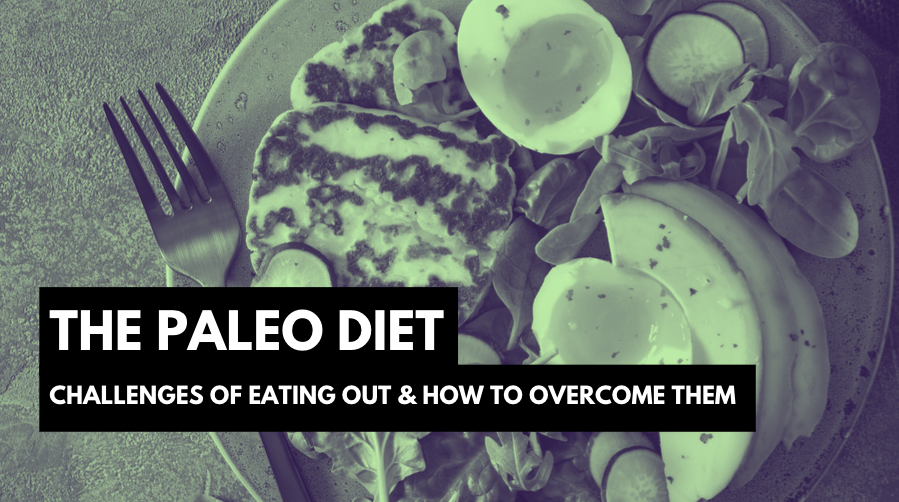
by wf_admin | Sep 19, 2023 | News
Adhering to a Paleo diet while dining out can be a challenging endeavor. The lure of convenience often clashes with the strict guidelines of this ancestral eating plan, leaving many followers feeling overwhelmed and frustrated. However, armed with a few savvy strategies and a commitment to your health, you can confidently navigate restaurant menus and enjoy meals that align with your Paleo lifestyle. In this comprehensive guide, we’ll delve into the common hurdles faced when eating out on a Paleo diet and provide you with actionable solutions to conquer these obstacles. So, let’s dig in and discover how to stay true to your Paleo principles while savoring the joys of dining out.
The Paleo Diet: A Brief Overview
Before we embark on our journey through the obstacles and remedies associated with dining out on a Paleo diet, it’s essential to gain a clear understanding of what the Paleo diet encompasses. Often referred to as the caveman diet, the Paleo diet draws its inspiration from the eating patterns of our ancient ancestors. It’s a nutritional approach that harks back to the Paleolithic era, a time when our forebears relied on the bounties of nature to sustain themselves.
Central to the Paleo philosophy is the consumption of whole, unprocessed foods that mirror the dietary choices available to our hunter-gatherer predecessors. Imagine a time when humans were intricately connected with the land, foraging for nourishment and hunting for sustenance. The Paleo diet seeks to capture this primal essence by promoting the consumption of foods that have undergone minimal processing or alteration.
Lean meats, such as grass-fed beef, poultry, and game meats, constitute a fundamental component of the Paleo diet. These sources of animal protein provide vital nutrients, including essential amino acids and heme iron. Additionally, fish, a rich source of omega-3 fatty acids, features prominently in the Paleo diet, reflecting the importance of aquatic resources in ancestral diets.
Vegetables and fruits, abundant in essential vitamins, minerals, and dietary fiber, play a crucial role in the Paleo diet. These plant-based offerings celebrate the diverse array of plant life that was available to our ancestors, nourishing them with nature’s vibrant palette of flavors and nutrients.
Nuts and seeds, heralded for their healthy fats, protein, and micronutrients, are celebrated as valuable additions to the Paleo diet. In the Paleolithic landscape, these nutrient-dense morsels were gathered from the wild and consumed for their energy-boosting properties.
However, what sets the Paleo diet apart is not only the foods it emphasizes but also the foods it excludes. Dairy, for instance, finds itself on the list of exclusions due to the fact that dairy farming and animal domestication emerged after the Paleolithic era. Similarly, grains and legumes, staples of many modern diets, are absent from the Paleo framework, as they became prevalent only with the advent of agriculture.
Refined sugars, another modern-day indulgence, are conspicuously missing from the Paleo diet. The diet champions a return to the natural sweetness found in fruits and the occasional use of natural sweeteners like honey and maple syrup.
In essence, the Paleo diet invites us to rekindle a primal connection with our ancestral dietary roots. It’s a culinary voyage that transports us back to a time when humans lived in harmony with the rhythms of nature, nourishing their bodies with unprocessed, nutrient-rich foods. As we navigate the challenges of dining out while adhering to the Paleo principles, this foundational understanding will serve as our compass, guiding us toward choices that honor both our health and heritage.
Challenges of Eating Out on a Paleo Diet
Limited Menu Options
One of the primary challenges when dining out on a Paleo diet is the limited menu options that align with your dietary preferences. Many restaurant menus are brimming with dishes containing grains, dairy, and processed ingredients, making it challenging to find Paleo-friendly choices.
Hidden Ingredients and Cross-Contamination
Even when you manage to identify a seemingly Paleo-friendly dish, there’s a risk of hidden ingredients and cross-contamination. Sauces, dressings, and cooking methods may incorporate non-Paleo ingredients, while shared cooking surfaces and utensils can lead to unintended exposure to grains and dairy.
Social Pressures and Peer Influence
Dining out often involves socializing and peer influence, which can be particularly challenging when following a specific diet. The desire to fit in or avoid drawing attention may tempt you to deviate from your Paleo principles.
Navigating the Paleo Maze: Solutions for Dining Out
Research and Choose Wisely
When confronted with a menu, take a proactive approach by researching the restaurant online beforehand. Many establishments now provide their menus and ingredient lists on their websites, allowing you to identify Paleo-friendly options in advance.
Customize Your Order
Don’t hesitate to customize your order to align with your Paleo preferences. Politely request modifications such as substituting grains for extra vegetables or asking for sauces and dressings on the side. Most restaurants are accommodating and willing to tailor dishes to your needs.
Communicate Clearly
To avoid hidden ingredients and cross-contamination, communicate your dietary requirements clearly to the waitstaff. Use simple language and emphasize the importance of your restrictions to ensure your meal is prepared without any unwanted additions.
Embrace Social Support
When dealing with social pressures, it’s essential to surround yourself with supportive friends and family who understand and respect your dietary choices. Explaining your commitment to your health and well-being can help mitigate any potential peer influence.
Plan B: BYOM (Bring Your Own Meal)
For occasions when dining out seems too challenging, consider bringing your own Paleo-friendly meal. This strategy ensures you have complete control over the ingredients and can enjoy your gathering without compromising your dietary goals.
Mastering the Art of Paleo Dining Out
Eating out on a Paleo diet may present its share of challenges, but armed with the right strategies and mindset, you can overcome them with confidence. By researching menus, customizing orders, communicating your needs, seeking social support, and having a backup plan, you’ll be well-equipped to enjoy delicious meals that align with your Paleo principles.
Remember, the Paleo diet is not just a temporary fad; it’s a commitment to your health and well-being. As you navigate the culinary landscape, embrace the adventure of discovering new restaurants that cater to your dietary needs and savor the satisfaction of staying true to your Paleo journey.
So, the next time you embark on a dining-out experience, be it a casual lunch with friends or a celebratory dinner, approach the menu with a discerning eye and a determined spirit. With each choice you make, you’re reaffirming your dedication to a healthier, more vibrant you.
The challenges of eating out on a Paleo diet may seem daunting at first, but they are by no means insurmountable. Armed with knowledge, preparation, and a dash of creativity, you can savor the joys of dining out while remaining true to your Paleo principles. Now, go forth and conquer the culinary world, one Paleo-friendly meal at a time.
References
- Cordain, L. (2019). Origins and evolution of the Western diet: health implications for the 21st century. The American journal of clinical nutrition, 81(2), 341-354.
- Frassetto, L. A., Schloetter, M., Mietus-Synder, M., Morris, R. C., & Sebastian, A. (2009). Metabolic and physiologic improvements from consuming a paleolithic, hunter-gatherer type diet. European journal of clinical nutrition, 63(8), 947-955.
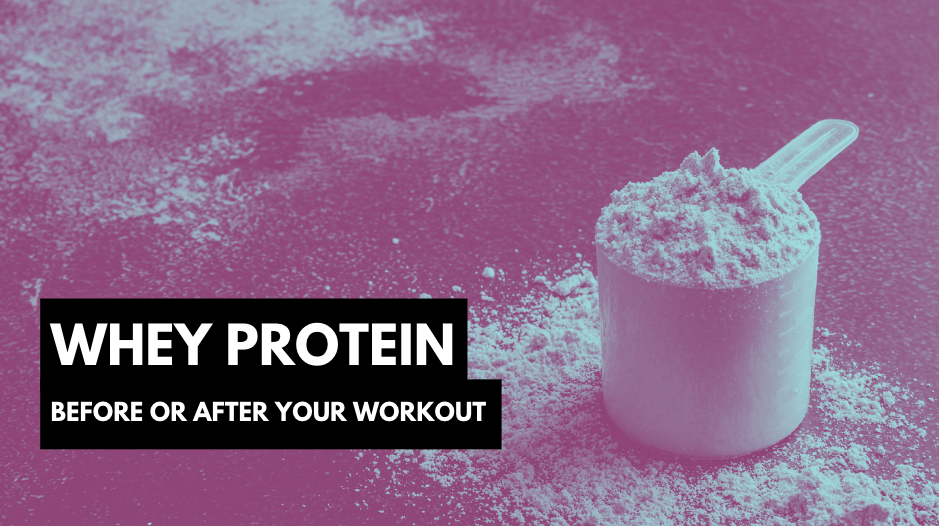
by wf_admin | Sep 12, 2023 | News
In the ever-evolving world of fitness and nutrition, the importance of protein supplementation has become a cornerstone of many workout routines. Whey protein, a complete protein derived from milk during the cheese-making process, has gained widespread popularity among athletes, bodybuilders, and fitness enthusiasts. The burning question that often arises is when exactly one should consume whey protein for optimal results. Should it be taken before or after a workout? Let’s delve into this topic and unravel the science behind the timing of whey protein consumption.
The Role of Protein in Muscle Growth
Before we dive into the timing aspect, it’s crucial to understand the role of protein in muscle growth and recovery. Proteins are composed of amino acids, often referred to as the building blocks of muscles. When you engage in physical activity, especially resistance training, you create micro-tears in your muscle fibers. Protein consumption helps repair and rebuild these damaged muscle fibers, leading to muscle growth and increased strength.
Pre-Workout Protein: Fueling Your Performance
Consuming whey protein before your workout can offer several benefits. Firstly, it provides a readily available source of amino acids, which can be utilized as an energy source during exercise. This is particularly beneficial if you’re following an intense training regimen or engaging in endurance activities. The amino acids in whey protein also help prevent muscle breakdown during exercise, ensuring that your hard-earned muscles are preserved during the workout.
To maximize the benefits of pre-workout whey protein consumption, consider taking it approximately 30 minutes to an hour before your workout. This allows enough time for digestion and absorption, ensuring that the amino acids are readily available when you hit the gym.
Post-Workout Protein: Enhancing Recovery
The period following your workout, often referred to as the “anabolic window,” is a critical time for muscle recovery and growth. Consuming whey protein after your workout can expedite this process. During exercise, your muscles undergo stress, and their glycogen stores are depleted. Whey protein helps replenish glycogen levels, aiding in muscle recovery.
Additionally, post-workout protein consumption stimulates muscle protein synthesis, which is the process of building new muscle tissue. The amino acids in whey protein provide the necessary raw materials for this process, helping your muscles repair and grow stronger.
For optimal results, consider consuming whey protein within 30 minutes to an hour after your workout. This timing capitalizes on the heightened sensitivity of your muscles to protein intake, maximizing muscle protein synthesis and recovery.
Personalization and Individual Goals
While the debate between pre-workout and post-workout whey protein consumption continues, it’s important to note that individual goals and preferences play a significant role in determining the best timing for you. Some individuals may benefit more from pre-workout protein to enhance performance, while others may prioritize post-workout protein to aid in recovery.
Ultimately, the key is consistency and adherence to your chosen timing strategy. Whether you opt for pre-workout or post-workout whey protein consumption, ensuring that you meet your daily protein requirements is paramount for achieving your fitness goals.
Wrap-up
In the grand scheme of your fitness journey, the timing of whey protein consumption is a piece of the puzzle that can contribute to your overall success. While both pre-workout and post-workout protein intake have their unique advantages, the most critical factor is providing your body with the essential amino acids it needs to support muscle growth, repair, and recovery.
As you navigate the world of fitness and nutrition, keep in mind that there’s no one-size-fits-all approach. Experiment with different timing strategies and observe how your body responds. Regardless of whether you choose to fuel up before hitting the gym or recharge with protein post-workout, the consistent incorporation of high-quality whey protein can undoubtedly propel you toward your fitness aspirations.
Remember, the journey to a healthier, stronger you is a marathon, not a sprint. So, lace up your sneakers, mix up that protein shake, and embark on your path to greatness. Your body and muscles will thank you for the nourishment and care you provide them, helping you achieve the results you desire.
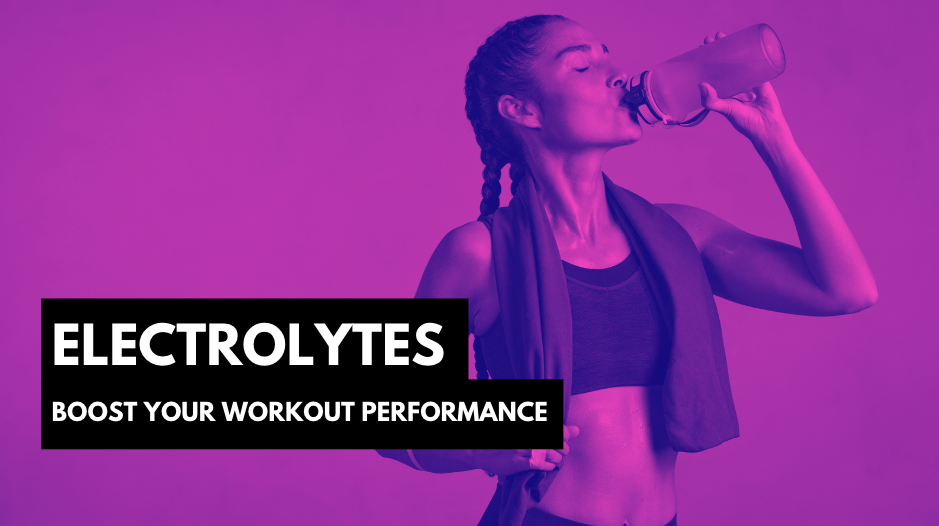
by wf_admin | Sep 6, 2023 | News
In the world of fitness and exercise, maximizing your performance is key to achieving your goals. Whether you’re an athlete, a fitness enthusiast, or just someone looking to stay active, understanding the role of electrolytes in boosting your workout performance is crucial. In this comprehensive guide, we will delve into the science behind electrolytes, their importance, and how you can effectively incorporate them into your fitness routine. So, let’s dive in and uncover the secrets to enhancing your exercise performance.
What Are Electrolytes?
Electrolytes are essential minerals that carry an electric charge when dissolved in a fluid, such as your blood or the fluids surrounding your cells. These minerals include sodium, potassium, calcium, magnesium, chloride, and phosphate. They play a vital role in maintaining the balance of fluids in your body, transmitting nerve signals, and supporting muscle contractions. Electrolytes are lost through activities like sweating, and it’s crucial to replenish them to ensure proper bodily functions.
The Importance of Electrolytes in Exercise
During physical activity, especially intense workouts, your body sweats to regulate temperature. As a result, you lose not only water but also essential electrolytes. When the balance of electrolytes is disrupted, it can lead to muscle cramps, fatigue, and even dehydration. Proper electrolyte levels are essential for maintaining fluid balance, preventing muscle cramps, and supporting optimal muscle function.
Electrolytes and Hydration
Hydration is a cornerstone of effective exercise performance. Proper fluid balance ensures that your muscles receive the necessary nutrients and oxygen, allowing them to work efficiently. Electrolytes play a critical role in this process by helping your body retain fluids. Sodium, for instance, helps your body hold onto water, preventing excessive fluid loss through urine. By replenishing electrolytes, you enhance your body’s ability to stay hydrated, even during rigorous workouts.
Sodium and Potassium: Dynamic Duo of Electrolytes
Sodium and potassium are two of the most important electrolytes for exercise performance. Sodium helps maintain fluid balance, while potassium is crucial for muscle contractions and nerve signal transmission. When you engage in intense physical activity, your muscles generate electrical impulses. These impulses trigger muscle contractions, and without adequate potassium, your muscles may cramp or become weak.
Calcium and Magnesium for Muscle Function
Calcium and magnesium are often associated with bone health, but their roles extend beyond that. Calcium is essential for muscle contractions, and having an adequate level can improve muscle strength and endurance. Magnesium, on the other hand, contributes to energy production and helps relax muscles after contraction. Ensuring proper levels of calcium and magnesium can contribute to enhanced workout performance.
Chloride and Phosphate: Supporting Players
While sodium, potassium, calcium, and magnesium take the spotlight, chloride and phosphate are also vital for maintaining electrolyte balance. Chloride helps regulate fluid levels, and phosphate is essential for energy production, especially during short bursts of intense exercise. Including a variety of electrolytes in your hydration strategy ensures comprehensive support for your workout endeavors.
Incorporating Electrolytes into Your Routine
Now that we understand the significance of electrolytes, let’s explore how you can incorporate them into your workout routine:
1. Hydration Stations
Create a hydration plan that includes electrolyte-rich beverages. Opt for sports drinks that provide a balanced mix of sodium, potassium, and other minerals. These drinks can help replenish electrolytes lost through sweat and keep you hydrated during your workouts.
2. Balanced Nutrition
Consume a diet rich in foods that naturally contain electrolytes. Bananas, oranges, spinach, yogurt, and nuts are excellent sources of potassium, calcium, and magnesium. Integrating these foods into your meals and snacks can contribute to maintaining proper electrolyte levels.
3. Electrolyte Supplements
If you have specific electrolyte needs, consider incorporating supplements into your routine. Consult with a healthcare professional or a nutritionist to determine the right type and dosage for your individual requirements.
4. Pre-Workout Preparation
Prior to exercise, ensure you’re adequately hydrated and have consumed electrolyte-rich foods or beverages. This can provide your body with the necessary resources to perform optimally and reduce the risk of muscle cramps.
5. Post-Workout Recovery
After your workout, focus on replenishing the electrolytes you’ve lost. Consuming a balanced meal or snack that includes both carbohydrates and electrolytes can aid in recovery and support muscle repair.
Wrap-up
In the pursuit of peak workout performance, don’t overlook the importance of electrolytes. These essential minerals play a significant role in maintaining hydration, supporting muscle function, and preventing fatigue and cramps. By incorporating electrolyte-rich foods, beverages, and supplements into your routine, you can elevate your exercise performance to new heights. Remember, your body deserves the best, and optimizing your electrolyte balance is a crucial step toward achieving your fitness goals.
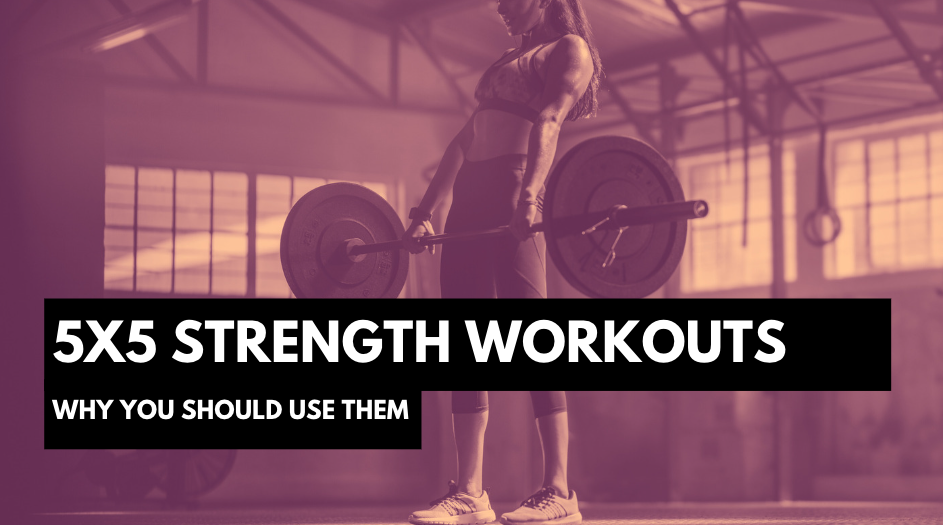
by wf_admin | Aug 29, 2023 | News
There’s a timeless mantra that holds true: “Strength is the foundation.” Whether you’re a seasoned gym-goer or just dipping your toes into the world of fitness, you’ve likely come across the term “5×5 strength workout.” This tried-and-true training approach has been hailed as a cornerstone of effective strength building and muscle development. In this comprehensive guide, we’ll delve into the ins and outs of 5×5 strength workouts, shedding light on why you should consider incorporating them into your fitness routine.
Understanding the Basics: What is a 5×5 Strength Workout?
What Does “5×5” Mean?
The term “5×5” refers to a specific set and rep scheme commonly used in strength training. It involves performing five sets of five repetitions for a given exercise. This format is renowned for its simplicity and effectiveness, providing a balanced combination of volume and intensity.
Compound Movements Take Center Stage
At the heart of every 5×5 strength workout lie compound movements. These multi-joint exercises engage multiple muscle groups simultaneously, leading to efficient muscle development and functional strength. Squats, deadlifts, bench presses, overhead presses, and rows are quintessential examples of compound movements frequently integrated into 5×5 routines.
The Advantages of 5×5 Strength Workouts
1. Efficient Muscle Development
The 5×5 approach thrives on progressive overload, a fundamental principle for muscle growth. By consistently increasing the weight you lift, you challenge your muscles, prompting them to adapt and grow stronger over time. This results in well-rounded and substantial muscle development.
2. Time-Effective Workouts
Modern life often leaves us juggling numerous responsibilities, making time a precious commodity. 5×5 strength workouts are renowned for their efficiency, enabling you to target major muscle groups and achieve significant results in a concise timeframe.
3. Boosted Functional Strength
Functional strength is the ability of your muscles to perform real-world tasks effectively. Compound movements in 5×5 workouts enhance your functional strength, equipping you to tackle daily activities and athletic pursuits with greater ease and confidence.
4. Enhanced Fat Loss
Muscle is a metabolically active tissue, meaning it burns calories even at rest. Engaging in 5×5 strength training can contribute to an increase in lean muscle mass, elevating your resting metabolic rate and aiding in fat loss endeavors.
5. Mental Resilience
Success in strength training extends beyond the physical realm. As you conquer challenging lifts and progressively achieve your goals, you cultivate mental resilience and a sense of accomplishment that transcends into other areas of your life.
Getting Started with Your 5×5 Strength Journey
1. Consultation and Assessment
Before embarking on any fitness regimen, it’s prudent to consult a qualified fitness professional. They can assess your current fitness level, discuss your goals, and tailor a 5×5 strength workout plan that aligns with your aspirations.
2. Proper Technique is Paramount
Executing exercises with proper form is non-negotiable in strength training. Improper technique not only diminishes results but also increases the risk of injury. Enlist the guidance of a coach or trainer to ensure your movements are precise and safe.
3. Gradual Progression
The 5×5 strength approach thrives on gradual progression. Begin with weights that challenge you without compromising form. Over time, steadily increase the weight you lift, allowing your muscles to adapt progressively.
4. Balanced Nutrition and Recovery
Support your strength-building journey with a balanced and nutrient-rich diet. Adequate protein intake is crucial for muscle repair and growth. Equally important is prioritizing recovery through sufficient sleep and active rest days.
5. Consistency and Patience
Rome wasn’t built in a day, and neither is strength. Consistency is key in any fitness endeavor. Embrace the process, celebrate small victories, and stay patient as you witness the transformative power of 5×5 strength workouts.
Wrap-up
In a fitness landscape brimming with trendy workouts and quick-fix solutions, the enduring effectiveness of 5×5 strength workouts stands as a testament to their efficacy. By incorporating compound movements, promoting muscle growth, and fostering mental resilience, these workouts offer a holistic approach to strength building. As you embark on your journey, remember that the path to strength is a marathon, not a sprint. Embrace the challenge, stay committed, and let the transformative benefits of 5×5 strength training propel you toward your fitness goals.





